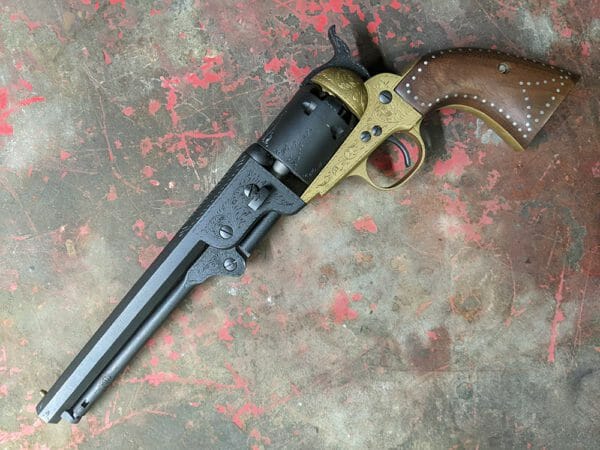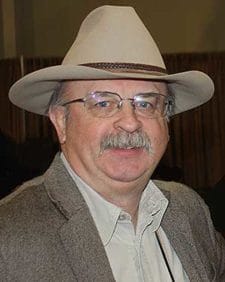
U.S.A. -(AmmoLand.com)- Finally, almost ten months after cinematographer Halyna Hutchins was killed on a New Mexico movie set during the filming of ‘Rust,” an FBI forensic report obtained by ABC News confirmed what knowledgeable gun owners have known from the start of the investigation: the gun held by actor Alec Baldwin “could not be made to fire without a pull of the trigger.”
Baldwin, who was also the producer of the film, was holding the F.lli Pietta single-action revolver when it discharged, sending a bullet through Hutchins and wounding director Joel Souza. How a live round got into the .45-caliber sixgun still remains a mystery.
According to ABC News, “With the hammer fully cocked, the gun ‘could not be made to fire without a pull of the trigger while the working internal components were intact and functional,’ the report stated.
“With the hammer de-cocked on a loaded chamber,” ABC reported, “the gun was able to detonate a primer ‘without a pull of the trigger when the hammer was struck directly,’ which is normal for this type of revolver, the report stated.”
Yet, Baldwin maintained during a Dec. 2, 2021 interview with ABC’s George Stephanopoulos, that he did not pull the trigger. The actor was rehearsing a scene for the film when the shooting occurred. ABC News quoted Baldwin attorney Luke Nikas, who stated, “The critical report is the one from the medical examiner, who concluded that this was a tragic accident. This is the third time the New Mexico authorities have found that Alec Baldwin had no authority or knowledge of the allegedly unsafe conditions on the set, that he was told by the person in charge of safety on the set that the gun was ‘cold,’ and believed the gun was safe.”
But critical gun owners have repeatedly observed Baldwin—or anyone else, for that matter—has the ultimate responsibility for making sure a firearm handed to him is unloaded by physically checking the gun immediately upon taking it in hand. For the type of single-action revolver involved, that simply requires the loading gate on the right side of the gun behind the cylinder to be opened as the hammer is pulled back to release the cylinder and then rotating the cylinder one chamber at a time to see whether any cartridges are in the chambers.
However, CNN is reporting that Nikas, via email, told the network, “The gun fired in testing only one time – without having to pull the trigger – when the hammer was pulled back and the gun broke in two different places… The FBI was unable to fire the gun in any prior test, even when pulling the trigger, because it was in such poor condition.”
The same CNN report noted, “FBI examiners observed an internal malfunction of the gun during testing at the fully cocked position, with the report noting “portions of the trigger sear and cylinder stop fractured while the hammer was struck.”
And KING News in Seattle is reporting, “In April, New Mexico’s Occupational Health and Safety Bureau delivered a scathing narrative of safety failures in violation of standard industry protocols. It included testimony that production managers took limited or no action to address two previous misfires on the set, complaints from crew members that went unheeded, and reports that weapons specialists were not allowed to make decisions about additional safety training.”
This raises more questions. If so-called “prop guns” were in such poor condition, why were they even on the set?
Much criticism has been directed toward lead armorer Hannah Gutierrez-Reed, daughter of Thell Reed, a familiar name among longtime shooters and people familiar with movie sets. Her attorney contends she’s being used as a scapegoat.
Veteran shooters—the genuine “gun safety experts”—will insist the last person to handle any firearm is responsible for checking its condition, whether loaded or unloaded. While guns are common on “action” movie sets and have been used millions of times over the years in westerns, gangster films, and big screen police epics, fatal incidents on film sets appear to be rare. Live ammunition is typically forbidden on film sets.
What happens next is open to speculation. Clearly, those most closely involved—and their attorneys—are already trying to spin the contents of the report. The Santa Fe County Sheriff’s Office is leading the investigation. So far, no charges have been brought against anyone.
About Dave Workman
Dave Workman is a senior editor at TheGunMag.com and Liberty Park Press, author of multiple books on the Right to Keep & Bear Arms, and formerly an NRA-certified firearms instructor.

from https://ift.tt/eVrFxyl
via IFTTT

No comments:
Post a Comment